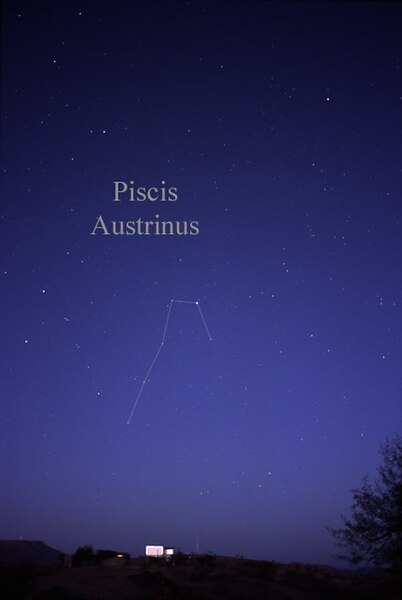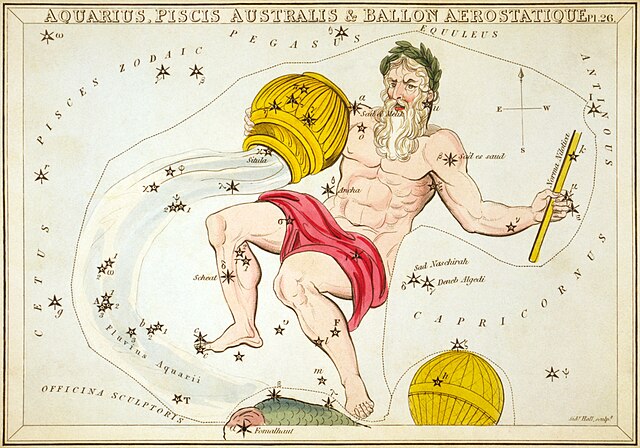Fomalhaut is the brightest star in the southern constellation of Piscis Austrinus, the Southern Fish, and one of the brightest stars in the night sky. It has the Bayer designation Alpha Piscis Austrini, which is an alternative form of α Piscis Austrini, and is abbreviated Alpha PsA or α PsA. This is a class A star on the main sequence approximately 25 light-years (7.7 pc) from the Sun as measured by the Hipparcos astrometry satellite. Since 1943, the spectrum of this star has served as one of the stable anchor points by which other stars are classified.
DSS image of Fomalhaut, field of view 2.7×2.9 degrees. Credit NASA, ESA, and the Digitized Sky Survey 2. Acknowledgment: Davide De Martin (ESA/Hubble)
Fomalhaut is the brightest star in the constellation of Piscis Austrinus (center).
Dust ring around Fomalhaut from the Atacama Large Millimeter/submillimeter Array (ALMA)
This image shows the discovery features in the debris disk of Fomalhaut from the James Webb Space Telescope (JWST) as well as overlays of Hubble Space Telescope (HST) data and the Atacama Large Millimeter/submillimeter Array (ALMA).
Piscis Austrinus is a constellation in the southern celestial hemisphere. The name is Latin for "the southern fish", in contrast with the larger constellation Pisces, which represents a pair of fish. Before the 20th century, it was also known as Piscis Notius. Piscis Austrinus was one of the 48 constellations listed by the 2nd-century astronomer Ptolemy, and it remains one of the 88 modern constellations. The stars of the modern constellation Grus once formed the "tail" of Piscis Austrinus. In 1597, Petrus Plancius carved out a separate constellation and named it after the crane.
Piscis Austrinus can be seen cut off at the bottom of Urania's Mirror's 1825 depiction of Aquarius. Next to it is the obsolete constellation Ballon Aerostatique.
The constellation Piscis Austrinus as it can be seen by the naked eye





